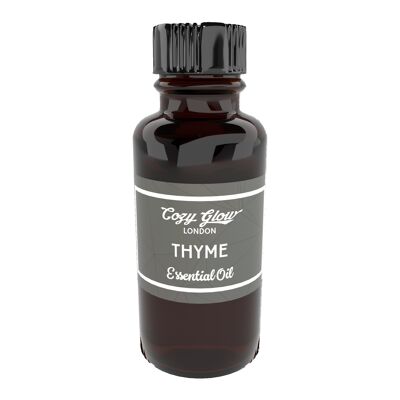


10ml Thyme Essential Oil Thyme Essential Oil can be known to have antifungal, anti-inflammatory and antibacterial properties. It can be used as a preservative in foods, cosmetics, and toiletries. It is also know to be found as an ingredient in mouthwash. - 10ml Thyme Essential Oil. - Botanical Name: Thymus vulgaris / Thymus zygis - Common Method of Extraction: Steam Distilled - Part Typically Used: Leaves and Flowers/Buds - Colour: Pale Yellow (May Vary, Depending on Specific Botanical, Chemotype and Distillation) - Consistency: Medium and Slightly Oily - Perfumery Note: Middle - Strength of Initial Aroma: Medium - Strong - Aromatic Description: Fresh, medicinal, herbaceous. - Thyme Oil Uses: Within Aromatherapy vs MRSA, Maggie Tisserand identifies and discusses Thyme as one of the three key essential oils that have the potential to combat MRSA. Julia Lawless lists these as other uses for Thyme Oil: Arthritis, colds, cuts, dermatitis, flu, insect bites, laryngitis, lice, muscle aches, oily skin, poor circulation, scabies, sore throat. [Julia Lawless, The Illustrated Encyclopaedia of Essential Oils (Rockport, MA: 1995), 57-67.] - Thyme (Thymus vulgaris, ct thymol) Major Constituents: Thymol p-Cymene Carvacrol Gamma-Terpinene B-Caryophyllene Linalool a-Pinene a-Terpinene Thyme (Thymus vulgaris, ct thymol) Safety Information: Tisserand and Young indicate that there is moderate risk for mucous membrane irritation, it may inhibit blood clotting and pose a drug interaction hazard. There is a low risk of skin sensitization, and Tisserand and Young recommend a dermal maximum of 1.3%. Reading Tisserand and Young's full profile is recommended. [Robert Tisserand and Rodney Young, Essential Oil Safety (Second Edition. United Kingdom: Churchill Livingstone Elsevier, 2014), 452-454.]





























